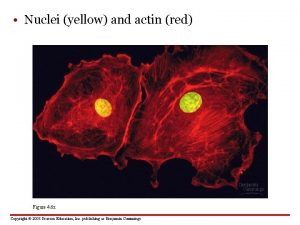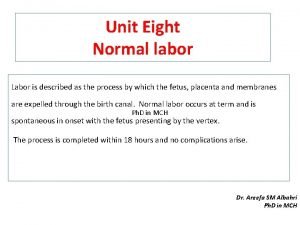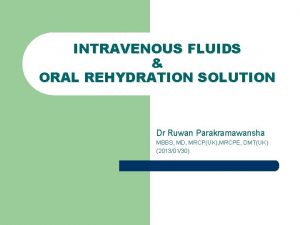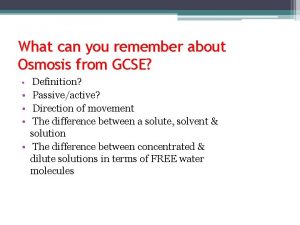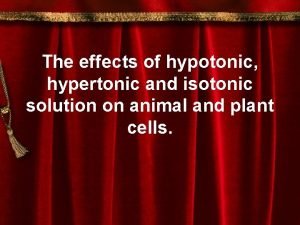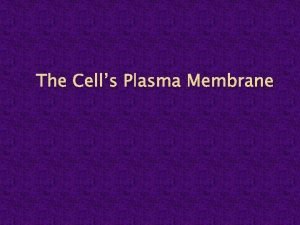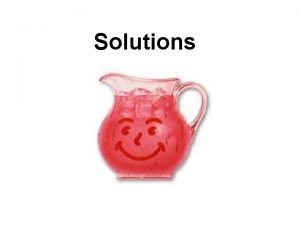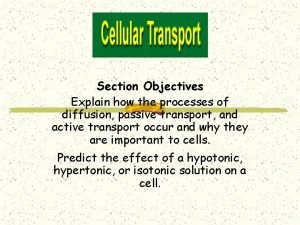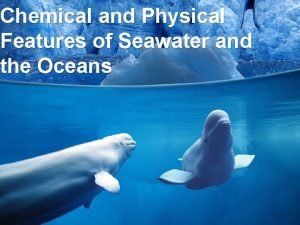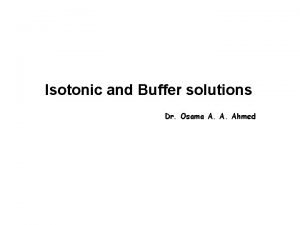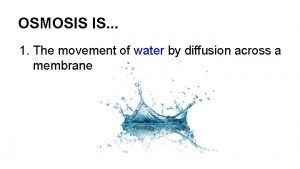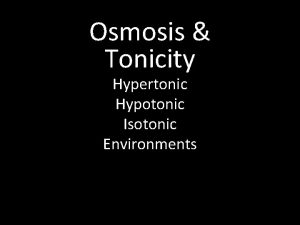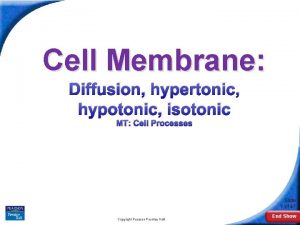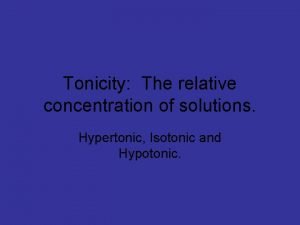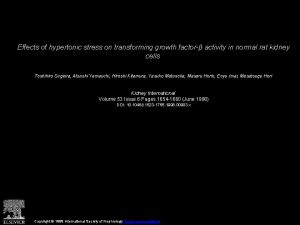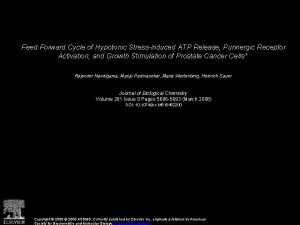The effects of hypotonic hypertonic and isotonic solution















- Slides: 15

The effects of hypotonic, hypertonic and isotonic solution on animal and plant cells.

• Hypertonic - Concentration with higher solute concentration and less water concentration • Hypotonic - lower solute concentration and more water concentration • Isotonic - Solution in which water molecule and solute molecule are equal in concentration.

Animal and plant cell In an isotonic solution • Isotonic solution is a solution in which the concentration of solutes is equal, so: - Water diffuses into and out of the cell at equal rates. - There’s no net movement of water across the plasma membrane - The cells retain their normal shape


Animal and plant cells in a hypotonic solution • Solution which contain higher concentration of water and lower concentration of solutes is called as hypotonic solution. • Since the concentration of water is higher outside the cell, there is a net movement of water from outside into the cell. • Cell gains water, swells and the internal pressure increases. Eventually burst (haemolysis).



• The effects of hypertonic solution in animal and plant cell Contain higher concentration of solutes and less of water than a cell. • Since the concentration of water is higher within the cell, there is a net movement of water from inside to outside of the cell. (water leaves the cell by osmosis) • Causes the cell to shrink as its internal pressure decreases.



Hypertonic solution on plant cell • Water diffuses out of the large central vacuole by osmosis. Water lose from both vacuole and cytoplasm cause to shrink. • Plasma membrane pulls away from the cell wall. (plasmolysis). • Become flaccid and less turgid. • Cell wall doesn’t shrink because it is strong and rigid.

• If plasmolysis continues, death may result. • If we placed the plasmolysed plant cell in a hypotonic solution (pure water), water moves into the cell by osmosis and become turgid again. (deplasmolysis)


Food preservation • The concept of osmosis and diffusion are applied in the preservation of food, such as fruits, fish and vegetables by using preservatives (salt, sugar/ vinegar) • Salt solution of hypertonic to tissue of fish. So water leaves the fish tissue and enter the salt solution by osmosis. • Fish become dehydrated and cell crenate. Therefore, bacteria can’t grow in fish tissue and bacteria cell will crenate. • Preserved fish don’t decay so soon and last longer.

• Preservation with vinegar • Mangoes are soaked in vinegar which has low p. H, vinegar diffuses into the tissues of the mangoes and become acidic. • Low p. H prevents the growth of microorganism in mangoes and preserved mangoes can last longer.
 Hypertonic hypotonic isotonic red blood cells
Hypertonic hypotonic isotonic red blood cells Hypertonic vs hypotonic uterine dysfunction
Hypertonic vs hypotonic uterine dysfunction True labour pain
True labour pain Emergency drugs in icu
Emergency drugs in icu Why do cells lyse in a hypotonic solution
Why do cells lyse in a hypotonic solution Serum osmolarity equation
Serum osmolarity equation Hypertonic definition gcse
Hypertonic definition gcse Hypertonic
Hypertonic Tonicity of plasma
Tonicity of plasma Solvent vs solute
Solvent vs solute Cellular transport ppt
Cellular transport ppt Hypertonic solution
Hypertonic solution Buffer isotonic solution
Buffer isotonic solution Measurement of isotonicity
Measurement of isotonicity Isotonic solution
Isotonic solution What is osmosis
What is osmosis
